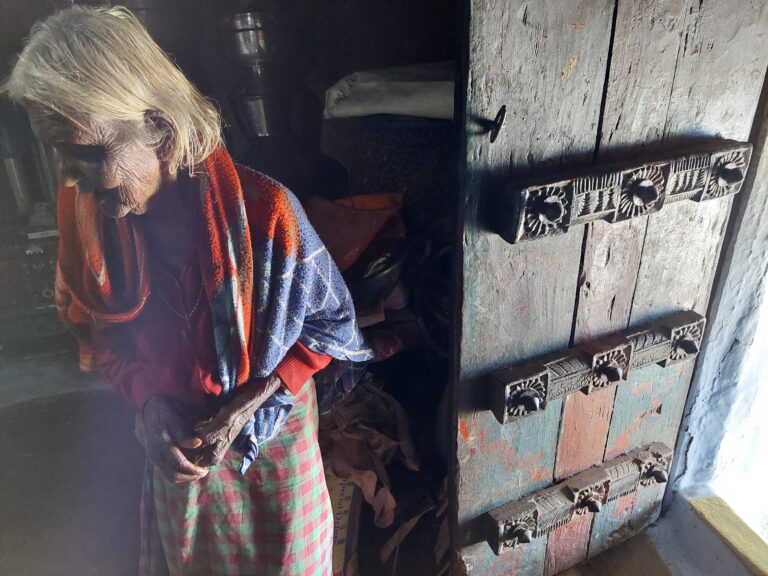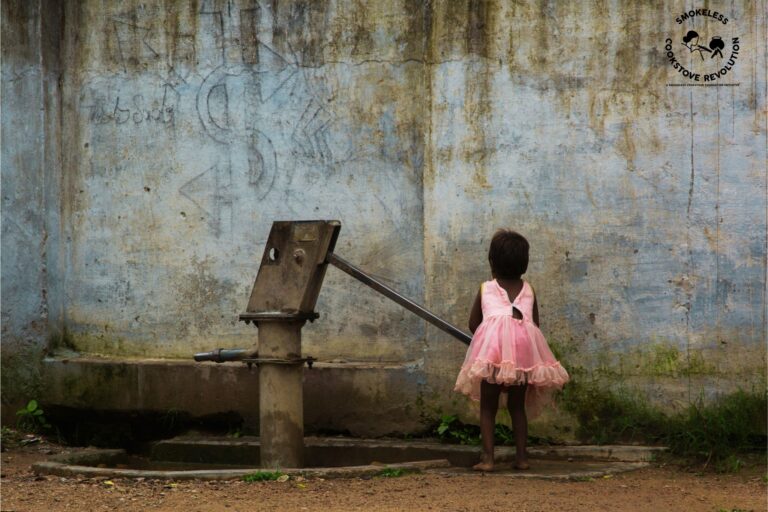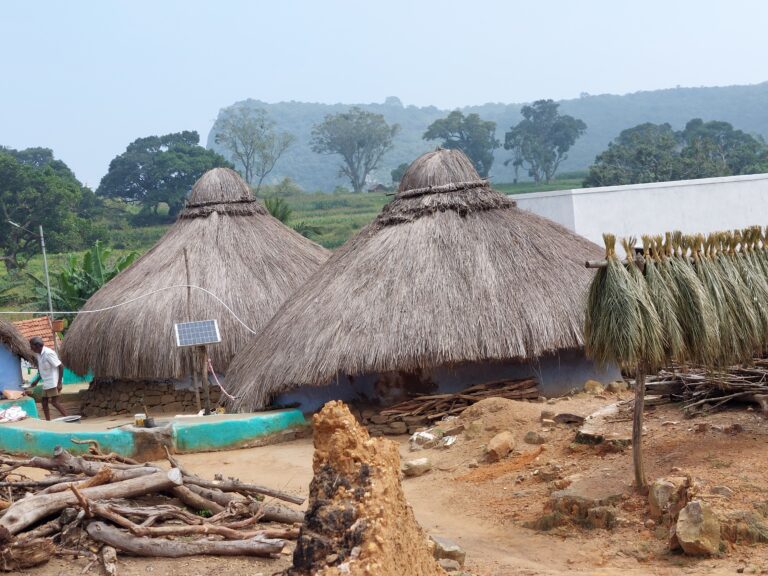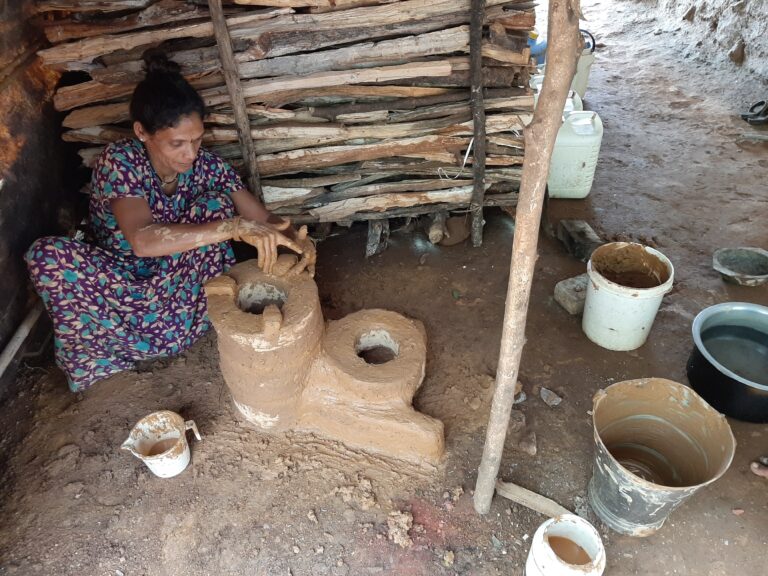Step into a rural kitchen at dawn or at dusk: the flicker of an open fire, the steady rhythm of a mother’s pestle grinding millet, the curious giggle of a toddler chasing a stray bean across the earthen floor. Now, picture an urban apartment kitchen: the hum of a microwave and a whistle of a pressure cooker, a mother juggling a boiling pot and a Zoom call, her toddler tugging at her jeans. In both scenes, the kitchen is the heart of the home, where love is stirred into every meal, where a mother’s hands weave sustenance and stories. Yet, a piercing question lingers: Is the kitchen a safe haven for our children, especially in their fragile first 1,000 days?
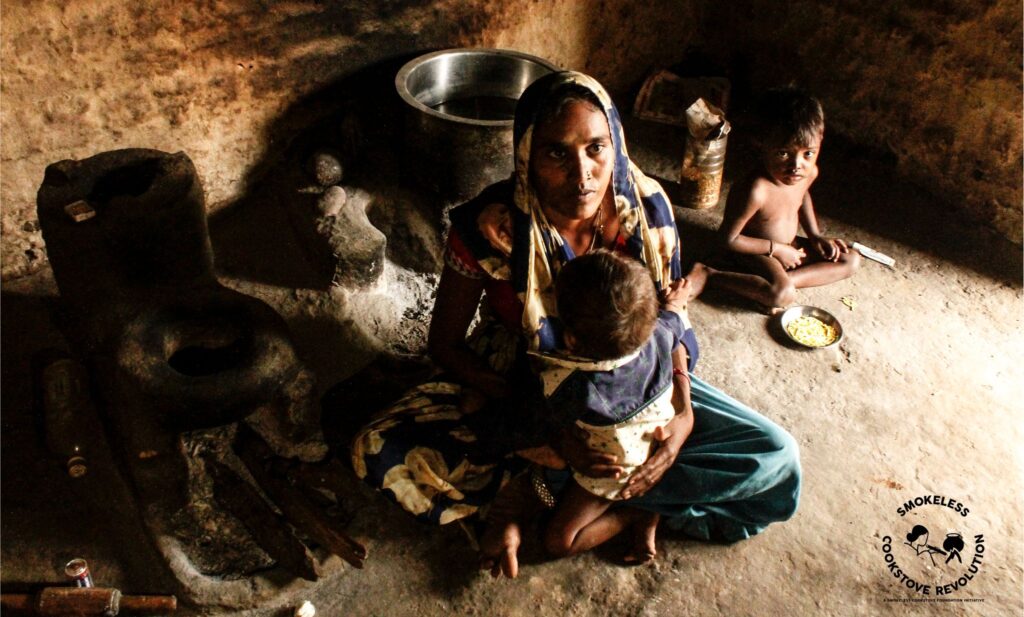
This is another thread that connects the mothers around the world, whether rural or urban or at the fringes. Though Smokeless Cookstove Foundation’s work is focussed only with rural and hard to access communities, this systemic issue aligns with every mother who has to serve the kitchen duties while taking care of her toddler. Where we are often busy pointing out rural urban divide but this is where the divide merges to an extent and shape shifts to a shared dilemma.
For toddlers, the kitchen is a magnet—alive with colors, smells, and their mother’s presence. But it’s also a place where danger hides in flames, sharp edges, and fleeting moments of inattention. In rural villages, mothers trek for water or firewood, leaving children in the care of available and often a tight-knit community. But sometimes, she has no option for childcare and hence she brings along her child wherever she goes, however perilous the journey is. Among nomadic communities, like the Banjara in India or pastoralists in East Africa, mothers carry infants while tending fires, their mobility limiting separation but heightening exposure.
Nomadic kitchens, often exposed to the vagaries of environment, are even more vulnerable. A 2023 Journal of Migration and Health study found that 70% of nomadic households lack proper food storage, increasing pest encounters amongst many other issues.
In urban nuclear families, mothers face isolation, balancing work and childcare alone.


What perils—physical, emotional, mental—await children in these spaces, and what burdens do mothers carry in their hearts?
A recent horrific incident last month, in a village in Uttar Pradesh’s Sonbhadra district, a chaat seller’s 18-month-old daughter fell into a pot of boiling chhola, suffering fatal burn injuries. Her mother, preparing food for the family’s livelihood, could only watch in horror as her child’s curiosity turned to tragedy. Heartbreakingly, the family had lost another daughter two years earlier in a similar kitchen accident, when she fell into a pot of cooking dal.
What does it mean for a mother to lose not one, but two children to the very space where she labors to feed them?
And what does it mean for us, practioners of access to clean cooking?

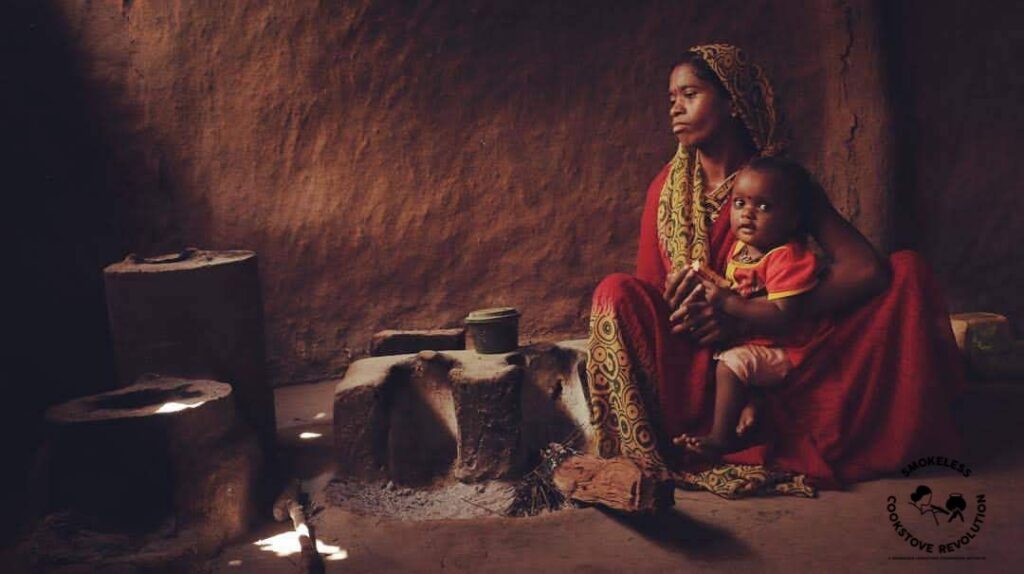
An emotion and a reality that binds the mothers everywhere, (L) Bundlekhand Uttar Pradesh (R) Khandwa, Madhya Pradesh
The Fragile Dance of Closeness
In rural homes, often built of mud and thatch, the kitchen is the pulse of family life. For a toddler in their first 1,000 days—a period when every moment shapes their body and soul—the kitchen is where they orbit their mother. Her presence is their anchor, her voice their lullaby. Research from Child Development (2020) shows that this proximity fosters secure attachment, building a child’s trust in the world. Urban kitchens, though equipped with modern appliances, mirror this dynamic. A 2022 study in Paediatrics found that urban mothers in nuclear families often keep toddlers close while cooking, driven by the same need for bonding. But closeness courts danger. How does a mother’s heart not tremble when her child toddles too close to a flame or a hot stove?
In a rural Indian village, a mother stirs a pot over an open chulha, her two-year-old clutching her sari. In a Mumbai apartment, a mother chops vegetables, her toddler reaching for a knife left on the counter. The World Health Organization (2023) reports that burns claim over 180,000 lives annually, with children under five in both rural and urban low-resource settings disproportionately affected. Rural kitchens face open flames; urban ones have hot stoves and electrical hazards. A 2021 Journal of Burn Care & Research study notes that urban children face a 30% higher risk of scalds from hot liquids due to cramped kitchen spaces. Can you feel the weight of a mother’s vigilance, her eyes darting between her task and her child, whether in a village or a city?
In October 2024, I did a field visit to Odisha to observe a Rural Creche programme which is based on the first 1000 days of child care and providing an option of shared responsibility for the young mother through the crèche ecosystem for the first few hours of the day. While the space was a beautiful, well curated environment keeping in mind the key markers for a child’s well-rounded learning and health (nutrition), sadly cooking area was neglected. The creches still had the most traditional mud chulas and the creche care takers were still cooking with sometimes more than 1 toddlers bound at their waste. This negates the over all purpose of these creches as both children and women are exposed to smoke as well as risk of fire related burns even when they are in the creche environment.
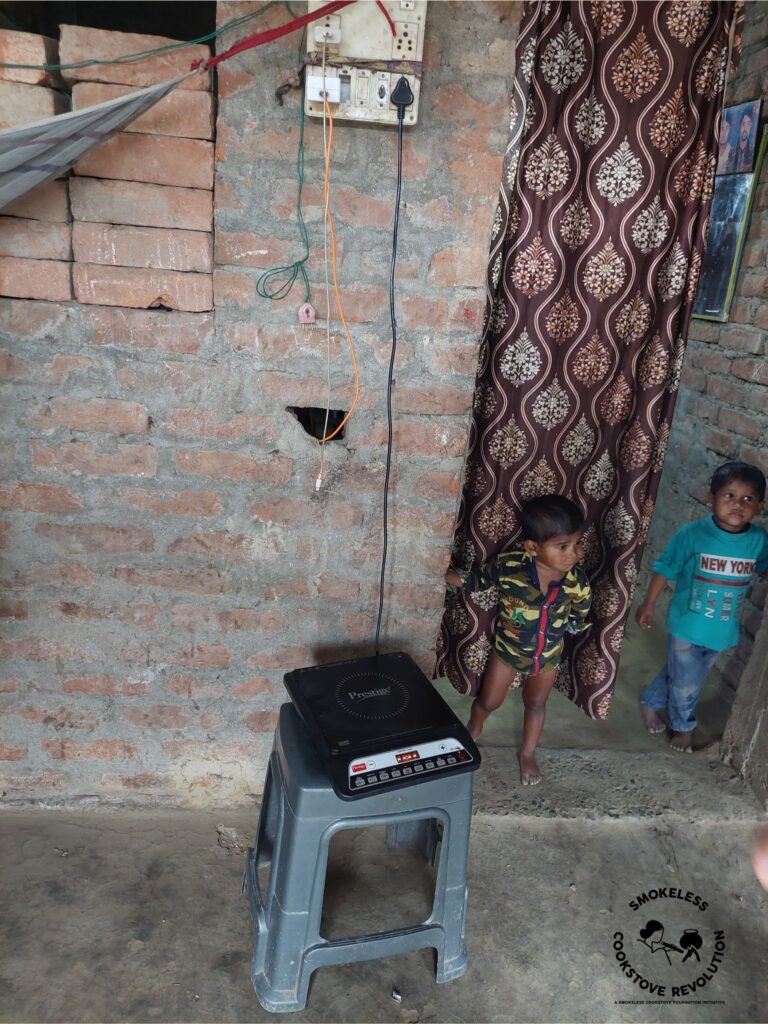
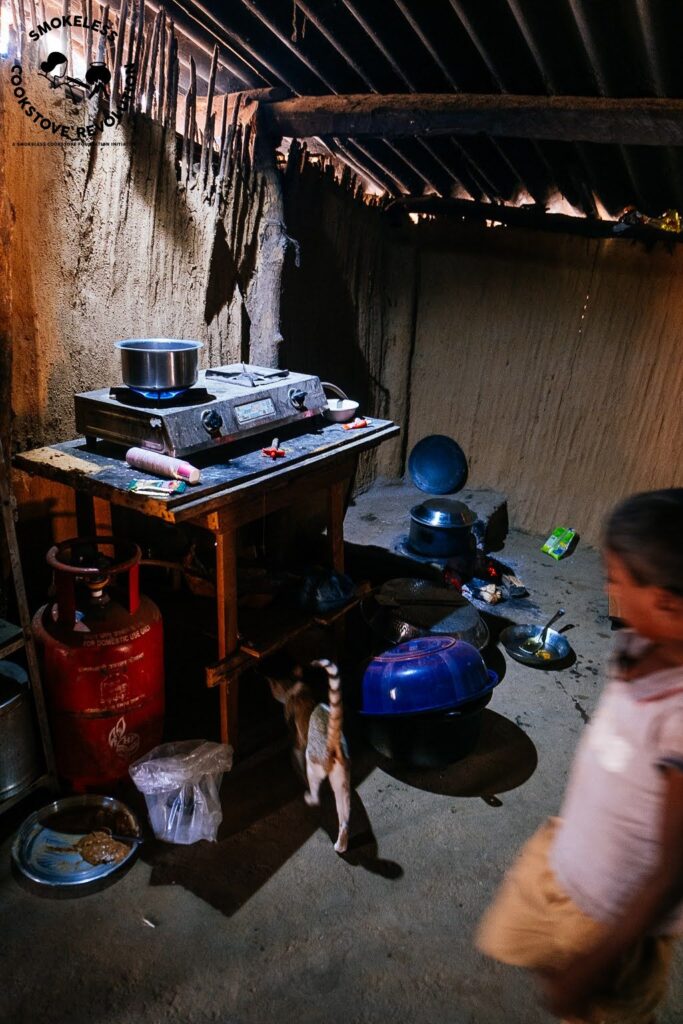
A minefield beyond the flames? (L) Exposed wiring while using Induction stoves; (R) Pests and animals roaming freely in the kitchen
A Minefield Beyond the Flames
The dangers extend beyond fire. In rural kitchens, open to the elements, pests and snakes invade food stores. A 2021 Rural and Remote Health study found that poor sanitation and storage increase contamination risks, with rodents and venomous creatures posing threats. What does it mean for a toddler, whose world is tasted through curious hands, to play where a snake might lurk? Urban kitchens, while cleaner, aren’t completely immune.
A 2023 Environmental Health Perspectives report highlights that urban homes in low-income areas often face pest infestations due to inadequate waste management. Cockroaches and rodents can contaminate food, exposing children to pathogens. In the first 1,000 days, when nutrition is critical, contaminated food or water can lead to diarrheal diseases—UNICEF (2022) notes these as a leading cause of malnutrition and death in young children, with urban and rural settings both affected. Every bite, every sip, carries a hidden question: Is this safe?
Then there’s the rhythm of absence. In rural areas, mothers must leave their children to fetch water or firewood, journeys that can stretch for hours. A 2024 WaterAid report reveals that women in parts of South Asia and sub-Saharan Africa spend up to 6 hours daily collecting water, often leaving toddlers in the care of siblings or alone in the kitchen. Yet, amidst this challenge, a quiet strength emerges: the women of the village step up for each other. In these close-knit communities, childcare is a shared embrace. A neighbor, an aunt, or a grandmother watches over the children, their laughter mingling as they play near the kitchen’s edge.
Its beautiful how these women weave a safety net of love, ensuring no child is truly alone! This communal bond, rooted in trust, softens the sting of absence, offering toddlers a sense of security even when their mother is away.
Have we not used the phrase often – ‘It takes a village to raise a child’…But where are villages in true sense?
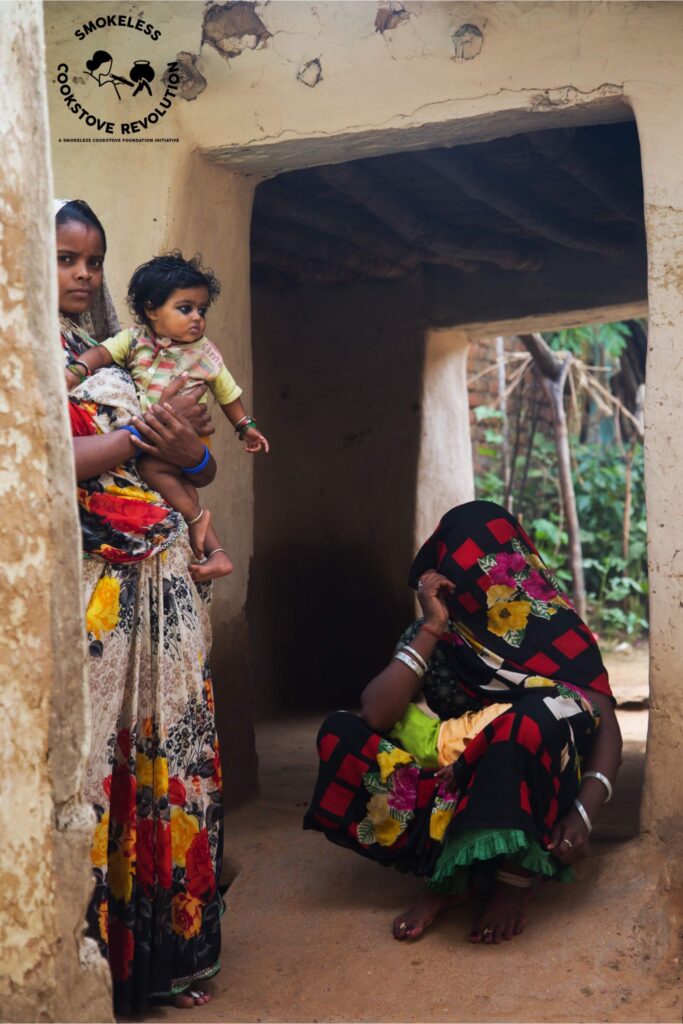
In urban nuclear families, this support is often absent. A 2023 Journal of Urban Health study found that 65% of urban mothers in low-income settings report feeling isolated, lacking the community networks rural mothers rely on. A mother in a Delhi high-rise might leave her toddler in a playpen to answer a work call, her heart racing as she hears a clatter from the kitchen. What does it mean to parent alone, with no village to lean on? The absence of communal childcare amplifies the emotional toll, leaving urban mothers to navigate risks without a safety net. Still, the question persists: Can any amount of carefully shield a child from the kitchen’s dangers?
The First 1,000 Days: A Kitchen-Centered Crucible
The first 1,000 days—from conception to age two—are a sacred window, a time when nutrition, safety, and love shape a child’s future. In rural kitchens, where mothers toil to feed their families, this period is both precious and precarious. Poor sanitation—dirty water, unwashed utensils—turns nourishment into risk. The WHO (2023) estimates that unsafe water and sanitation cause 88% of diarrheal deaths in children under five. Urban kitchens face similar challenges in low-income settings, where water quality can be unreliable. A 2022 Lancet Global Health report notes that 40% of urban households in developing countries lack consistent access to clean water, increasing infection risks. How does a mother bear the pain of seeing her child sicken from the food she prepared with such care?

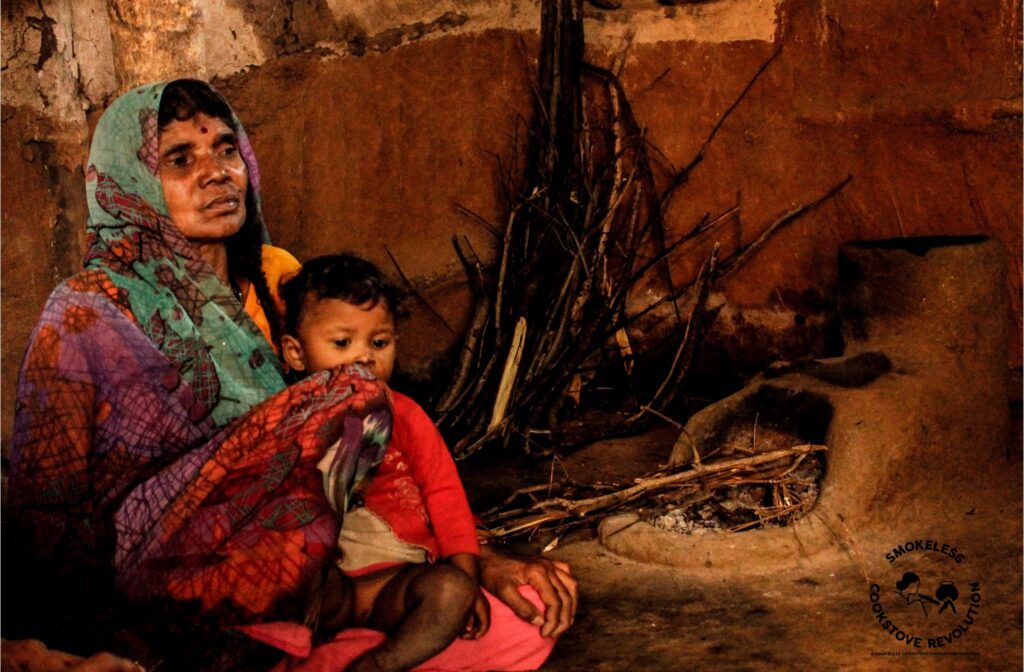
Storage compounds the challenge. In rural kitchens, food kept in open containers or on the floor invites pests and spoilage. In urban homes, cramped spaces and improper storage can lead to contamination. A toddler, driven by instinct to explore, might grab a moldy grain or a spoiled snack. What does it do to a mother’s spirit to know the kitchen, her domain of care, could betray her child? The first 1,000 days demand clean, safe food, but in kitchens where resources are scarce—rural or urban—this feels like an impossible prayer.
The Weight of a Mother’s Heart
The kitchen is a crucible of emotions. For mothers, it’s a space of pride—where they transform raw ingredients into sustenance—but also of relentless pressure. Every task, from stirring a pot to sweeping the floor, is shadowed by the need to protect. How does a mother not crumble under the fear that one misstep could harm her child? The constant vigilance, the guilt of leaving to fetch water or attend to work, the dread of pests or accidents—these weave a tapestry of stress. A 2023 study in Global Public Health found that chronic stress in rural mothers, driven by caregiving and resource scarcity, can lead to burnout and depression. Urban mothers face similar strains; a 2024 Maternal and Child Health Journal study reports that 55% of urban mothers in nuclear families experience anxiety related to childcare isolation, impacting their mental health and bonds with their children.
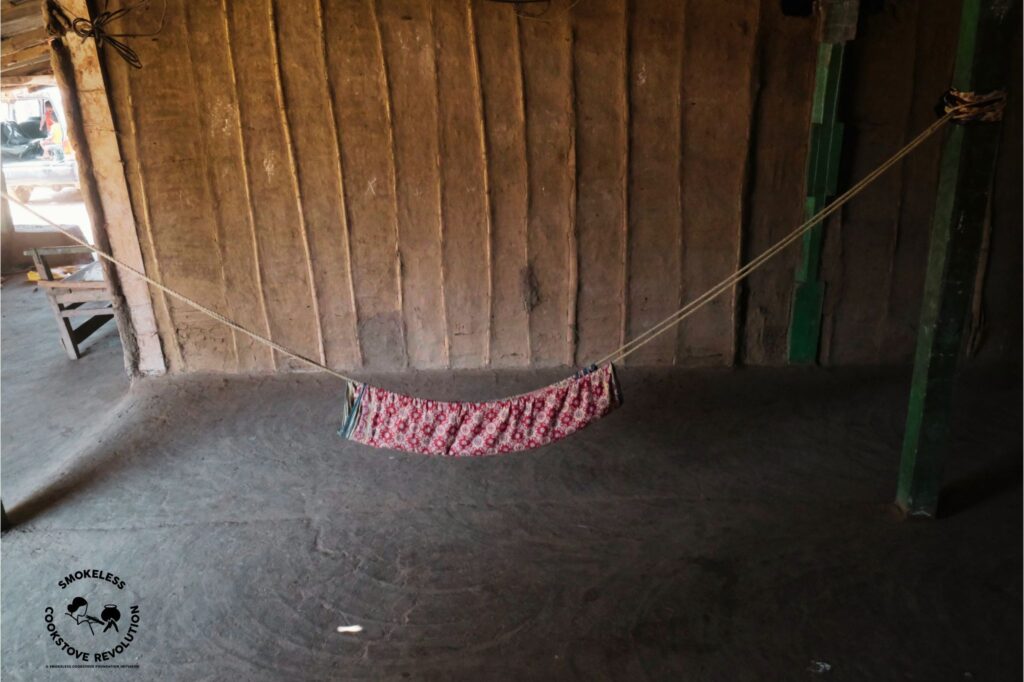
In rural villages, the sisterhood of shared childcare offers solace. What does it mean to know another woman is watching your child, singing to them, as you trek for firewood? This collective strength lightens the burden, but urban mothers often lack this support, facing their fears alone. For children, the kitchen is a paradox—a place of comfort and chaos. The crackle of fire, the buzz of a blender, the sudden scamper of a pest can jolt a toddler’s fragile sense of safety. What does it do to a child’s heart to grow up in a space where warmth and danger intertwine? The absence of a mother, even briefly, can etch uncertainty into their developing minds, though rural children may find comfort in the village’s embrace, while urban children rely solely on their mother’s return.

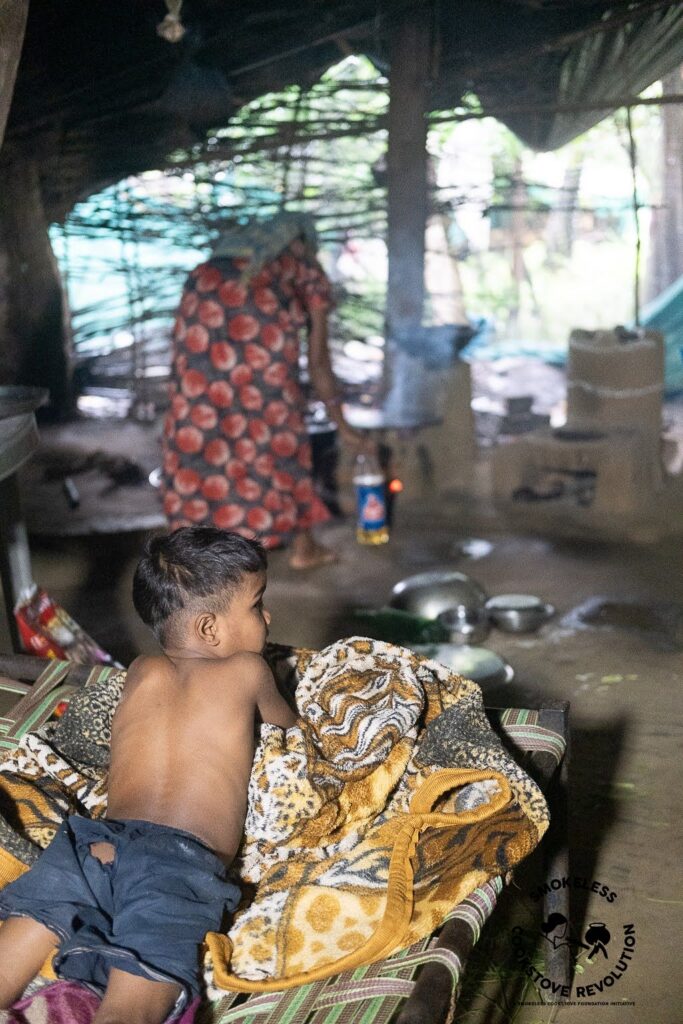
Spirit of Mothercare overpowers everything…but isn’t it time that we provide a safer and empowered environment for our mothers
A Cry for the Heart of the Home
The kitchen—rural, urban, nomadic—is a sacred space, where mothers pour love into every meal, where children take their first steps, cradled by a village’s embrace, a solitary mother’s devotion, or a transient hope. Yet, it’s also a place of unspoken fears, where flames, pests, and absence cast long shadows.
The tragedy in Sonbhadra, where a mother lost her toddler to a pot of boiling chhola, echoes the pain of countless others, rural and beyond, where kitchens turn from sanctuaries to sites of loss. Why must the heart of the home be a place of such peril for our youngest?
Why must the heart of the home be a place of such peril for our youngest? Systemic gaps—unsafe cooking setups, poor sanitation, lack of community for urban and nomadic mothers—deepen these risks, leaving mothers to carry impossible burdens and children to navigate a world of hidden threats. What does it mean for a mother to nurture in a space that could harm, for a child to grow where safety is a fleeting dream? With hearts heavy with compassion, we must ask: How can we let these kitchens, these cradles of love, remain battlegrounds for survival, when every mother and child deserves a sanctuary where fear does not dim the light of care?
Once again, this blog is not to look for answers but to look deeper into edges and fringes where there is no data or a numeric impact indicator, but a sense of emotion that drives the action. And perhaps before deciding which stove however carbon efficient it may be, for our communities, we see what might be the potential dangers for a child who is just looking to play near their mother..
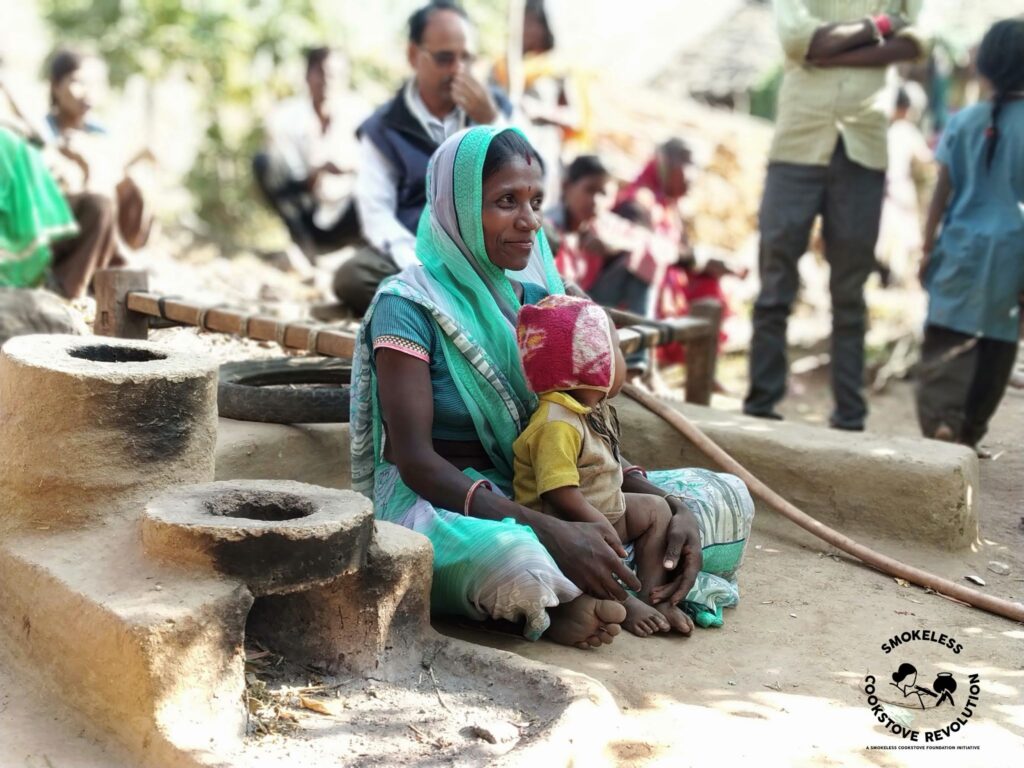
All pictures used in this documentation are taken during Smokeless Cookstove Foundation’s field projects
About the author
Nitisha is the Founder & Director of Smokeless Cookstove Foundation that works with communities across India to create awareness about clean energy and various livelihood linkages connected to clean energy. Her NGO teaches such communities the skill of making an improved mud cookstove model from naturally available materials based on Rocket Stove Technology to help them reduce drudgery emanating from rudimentary cooking methods.

